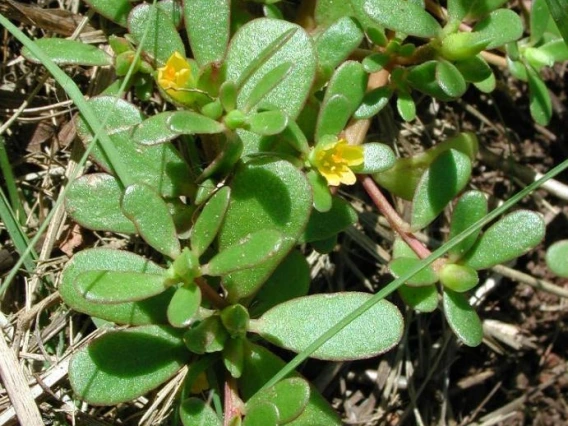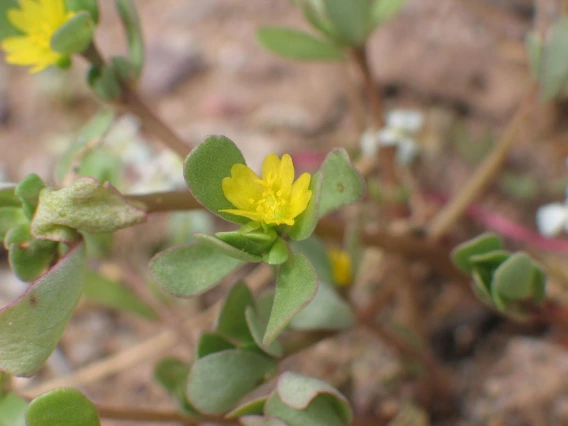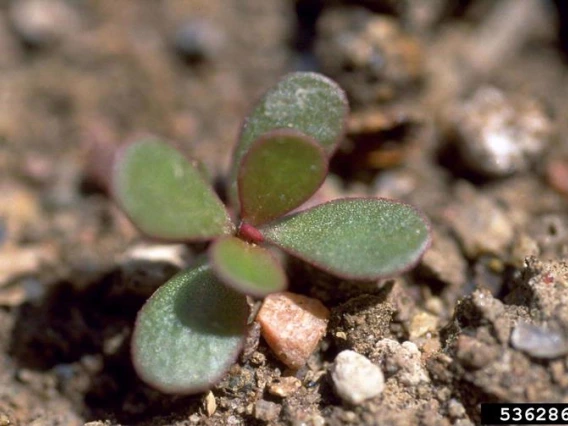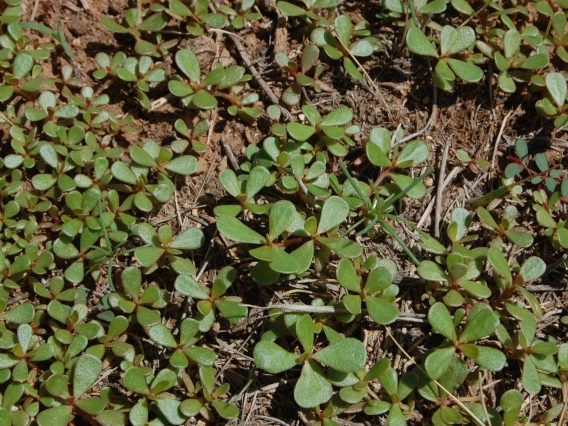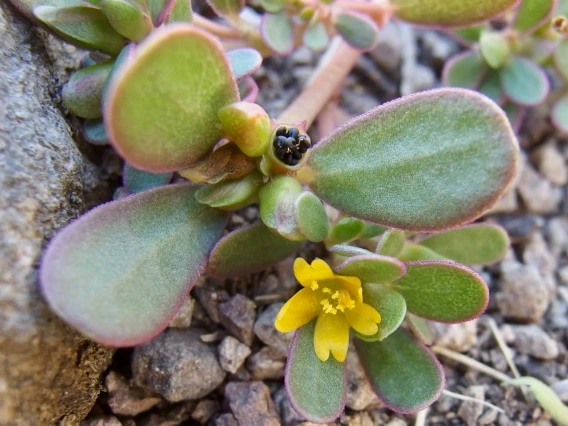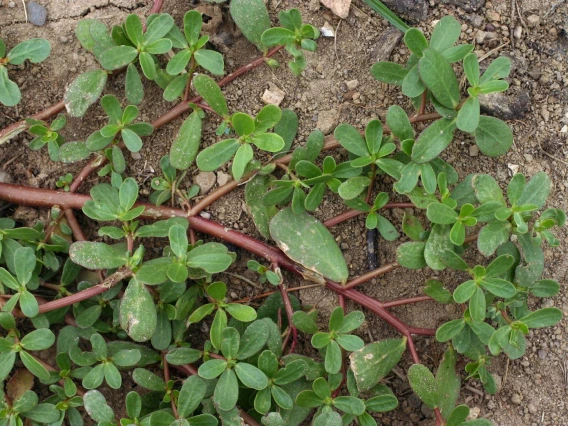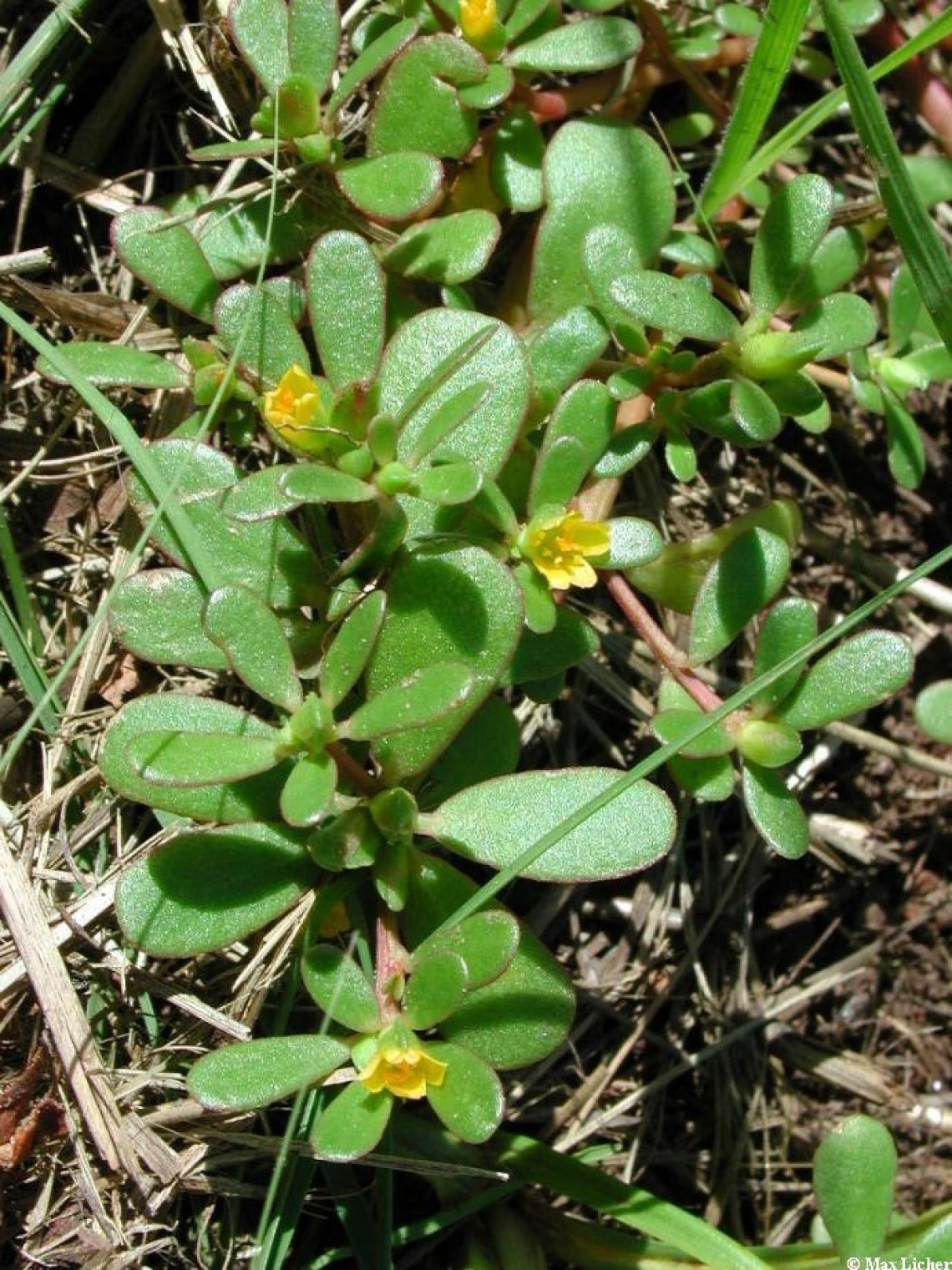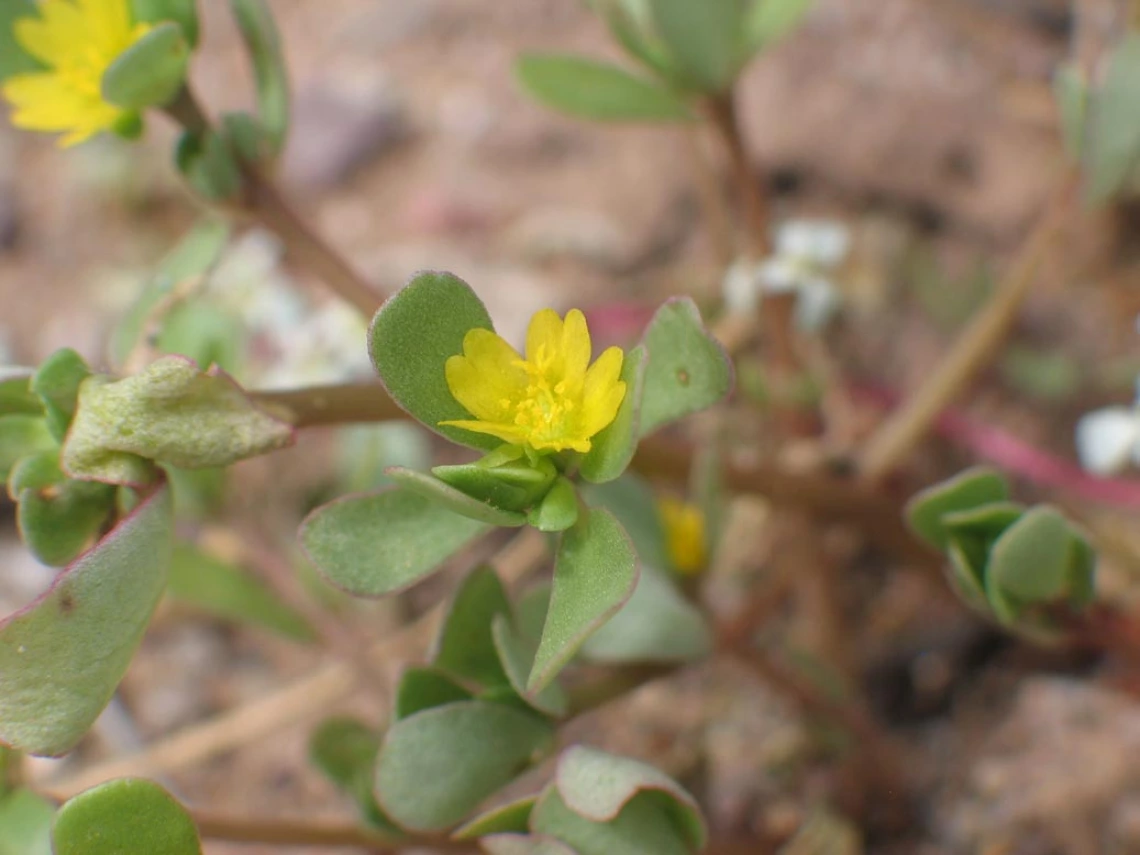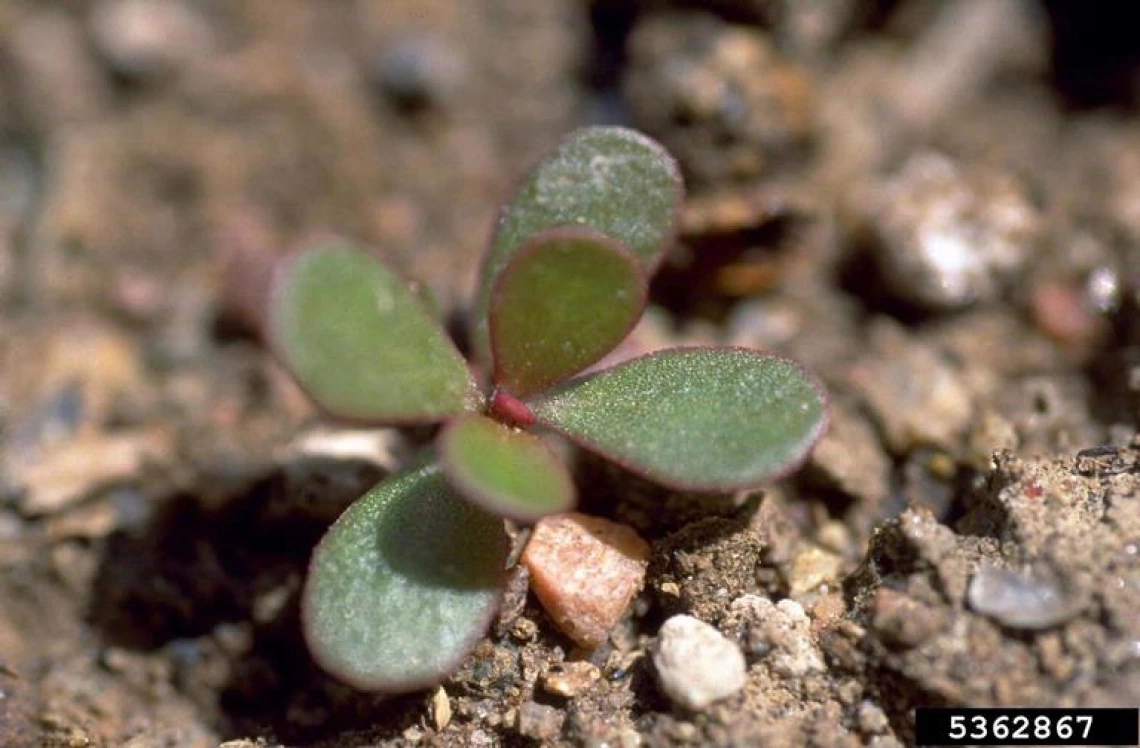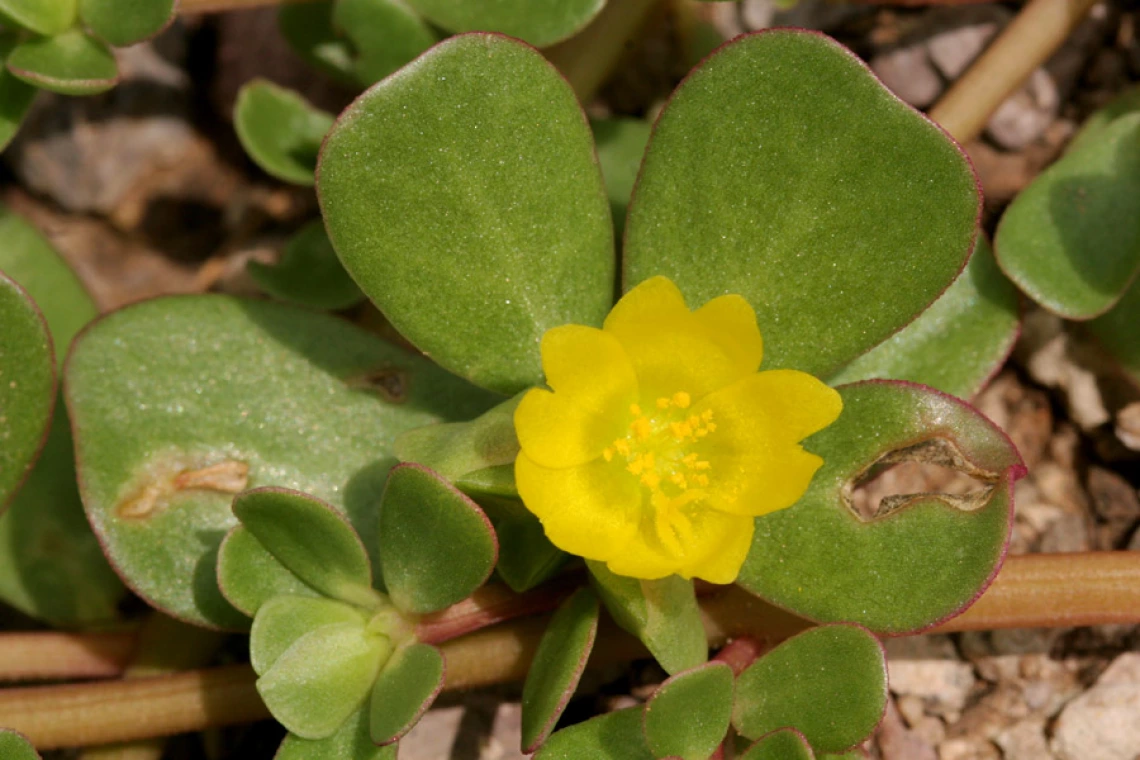Image
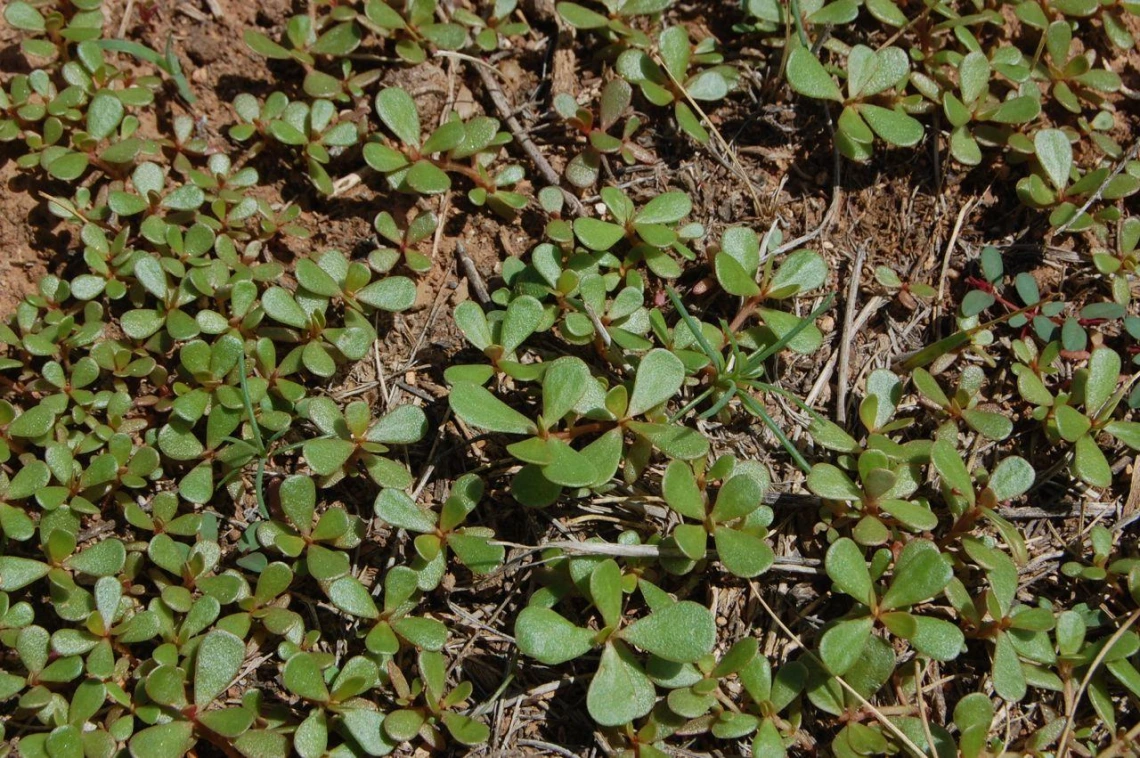
Purslane habit
Kirstin Olmon Phillips, swbiodiversity.org/seinet
Common Name(s)
Purslane
Common purslane
Scientific Name
Portulaca oleracea
Family
Purslane family (Portulacaceae)
Reasons for concern
This plant is a nuisance in landscapes, gardens and agricultural fields. It easily outcompetes more desirable native species, reducing native plant diversity and the pollinators and wildlife, which are dependent on them.
Classification
Non-native. Included on the Arizona Noxious Weed List.
Botanical description
Common, prostrate, succulent plant.
Leaves
Smooth, shiny, fleshy green with red margins, teardrop or wedge-shaped. Wider at tip than at base, between ¼ and 1 inch long and 1/16 to ½ inches wide. Attached to stems without a stalk, arranged alternately along lower ends of stems, produced in clusters at stem tips.
Stem(s)
Grow close to ground. Smooth, fleshy, branching, reddish or flesh-colored stems, up to 12 inches. Stems radiate from central rooting point, forming dense mats, growing and spreading rapidly.
Flowers
Individual or in clusters at stem tips. Generally open for one day, only in sunshine. Yellow flowers, 5 notched petals appear in leaf axils (where leaf meets stem). Blooms May through September.
Seeds
Numerous, tiny, black seeds produced in globe-shaped capsules resembling flower buds. Mostly fall near parent plant, but disperse by water, animals or other human activities.
Roots
Simple or branched taproot with fibrous roots mostly near soil surface.
Native to
Europe, but there is speculation it originated in North Africa
Where it grows
Found in gardens, ornamental beds, pavement cracks, waste areas, plant nurseries, and cropland. Found nearly world-wide up to 7,600 feet.
Lifecycle
Summer annual
Reproduction
By seed and by stem fragments
Weedy Characteristics
Leaves screen out light to soil surface, preventing emergence of more desirable seedlings. One plant can produce 240,000 seeds, which can remain viable up to 40 years. Stems can remain viable after pulling and re-root themselves if left on soil.
Control Strategies
Its ability to re-root after cultivation or hoeing makes it difficult to eradicate. Hand-pulling, tilling, or hoeing are helpful. Discard all pulled plants in the trash. Do not let plants go to seed. Thick mulches that screen out all light are beneficial in reducing seed germination. Long-term soil solarization, using heavy newspaper layers or landscape cloth covered with very thick mulch, can be effective in discouraging seed germination. Repeatedly monitor previous infestations for new growth. Plant desirable native species to outcompete invasives.
References
- Common purslane University of California Agriculture and Natural Resources IPM – Pests in Gardens and Landscapes
- A Northern Nevada Homeowner’s Guide to Identifying and Managing Common Purslane University of Nevada Cooperative Extension
- Purslane: Weed it or eat it? University of Illinois Extension

